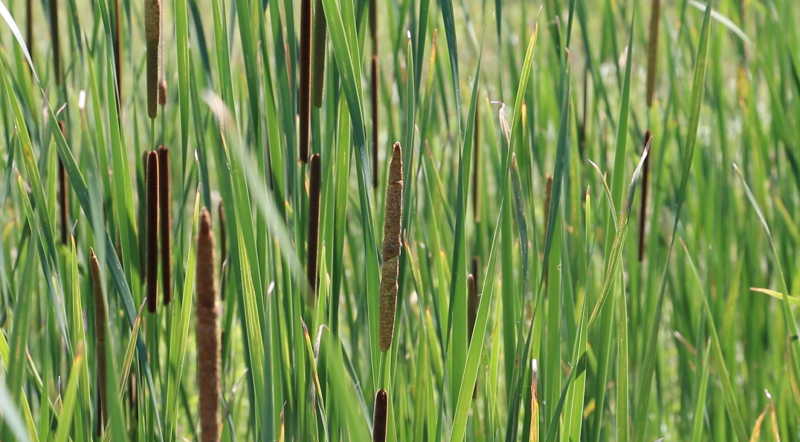
Wild Eats Episode 3: Cattails
Who needs mining gold when you can have swamp gold? What is swamp gold, you ask? Well, hold onto your hats ladies and gentlemen: you’re in for a treat! The North Country may not have a lot of golden ore, but its wetlands are filled with cattails whose pollen transforms local swamps into a virtual goldmine.
Cattails (Typha latifolia) are common wetland plants that are surprisingly useful to humans. Native North Americans used cattails to construct shelters, sleeping mats, cordage, shoes, and more. Cattail roots, flowers, and pollen are edible, and provide a variety of important minerals, amino acids, and vitamins. With such versatility, swamp gold may be worth more than its weight in gold should you find yourself in an outdoor survival situation. You can reap these benefits by foraging for cattail pollen from late spring to midsummer before it has blown away.
Pollen is harvested from the spike, which looks like a greenish-gold corndog on top of the stem. To collect it, place a plastic bag around the spike and give it a few firm taps, so the pollen falls into the bag. After collecting your hands will be caked with the golden dust and your feet covered in mud, making it a slightly messy - but also very fun - foraging experience.
When brought back to the kitchen the pollen can be partially substituted for flour in many different baking recipes. The collection and cooking process is a wonderful weekend activity to do with friends or family, and the pollen will give your batter a beautiful golden tint. Try foraging for cattails yourself, and get rich from the benefits of swamp gold. Check out the video below to learn how to make Cattail Pancakes!
Recipe:
1/2 C cattail pollen
1/2 C all purpose flour
2 tsp baking powder
1 Tbsp sugar
½ tbs. cinnamon
½ tbs. nutmeg
1 C milk
1 egg or egg substitute
2 Tbsp oil
1 Can Cooking Spray
1. Collect cattail pollen.
2. Sift cattail pollen to get fine powder.
3. Combine dry ingredients (pollen, flour, baking powder, cinnamon, nutmeg, and sugar) and then mix.
4. Add wet ingredients (milk, egg, and oil) and then mix to create batter.
5. Spray skillet with cooking spray andp our batter on hot griddle.
6. Flip pancakes when you can see bubbles forming in batter and sides are golden.
7. Serve hot with your favorite pancake toppings!

